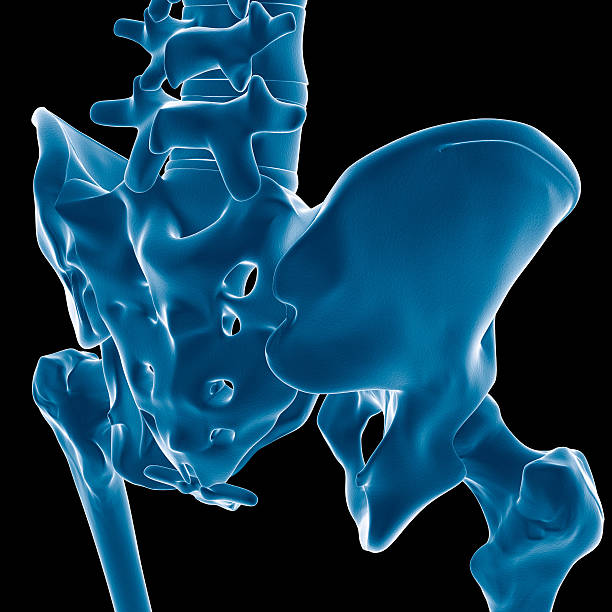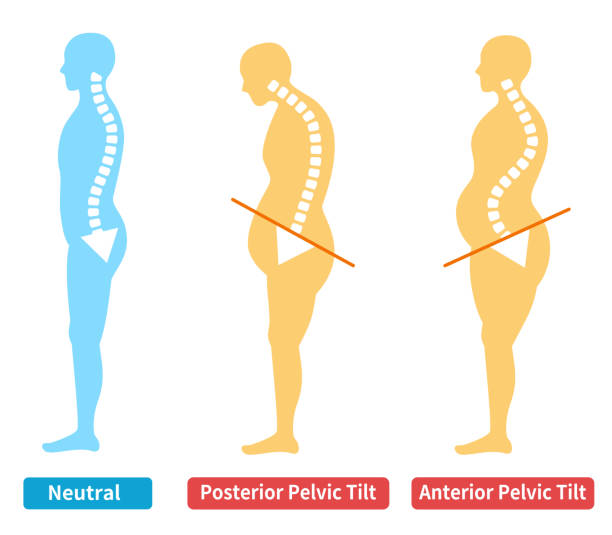Joint Health
What Really Causes Your Pelvic to Tilt
Our pelvic alignment is critical to maintaining appropriate posture and avoiding pain and discomfort in the lower back and hips. When your pelvis tilts, it can cause a number of complications that affect your general health. But why does your pelvis tilt in the first place? In this article, we’ll look at the common causes of a tilted pelvis and how it can affect your health.
Understanding Pelvic Tilt
Let’s start with a definition of pelvic tilt. Pelvic tilt is the position of your pelvis relative to the rest of your body. Ideally, the pelvis should be neutral, with the pubic and hip bones aligned vertically. However, as the pelvis moves forward or backward, it causes an anterior or posterior pelvic tilts.

Causes of Anterior Pelvic Tilt
The tilting of the pelvis is mostly caused by imbalances in the muscles. There is a possibility that the pelvis would shift out of alignment if certain muscles, such as the hip flexors or the glutes, will become weaker or tighter. The majority of the time, these imbalances are the result of poor posture, sitting for extended periods of time, and absence of physical activity. Moreover, certain occupations or hobbies that entail actions that are repeated over and over again or that place an excessive amount of strain on the pelvis can be factors that contribute to an anterior pelvic tilt.
Symptoms of Anterior Pelvic Tilt
You may have a number of symptoms that have an effect on your day-to-day life if you have an anterior pelvic tilt. A tilted pelvis is characterized by a number of symptoms, the most prevalent of which are pain in the lower back and hips, as well as a restricted range of motion in the hips and lower back. It is also possible that you will experience discomfort when standing or walking, as well as tension in the muscles of your hip flexors or glutes. A tilted pelvis can produce postural issues in severe cases, such as a protruding abdomen or a noticeable wobble in the lower back. These abnormalities can be severe enough to be noticeable.
How to Diagnose Pelvic Tilt
If you believe that you have a tilted pelvis, you should be sure to consult a medical specialist in order to receive an accurate diagnosis. Your posture, range of motion, and any accompanying pain or discomfort will often be evaluated during the course of a physical examination that they will do. When certain conditions are present, it may be required to do additional diagnostic procedures, such as X-rays or MRI scans, in order to eliminate the possibility of other underlying problems.

Exercises to Correct Anterior Pelvic Tilt
You are in luck since there are exercises that can assist you in correcting an anterior pelvic tilt and regaining the appropriate alignment. For the purpose of stabilizing the pelvis, it is vital to strengthen the muscles that are weak and to loosen the muscles that are tight. The glutes can be strengthened by exercises such as hip bridges, clamshells, and lunges. Additionally, hip flexor and hamstring stretches can be beneficial for increasing flexibility. If you make these exercises a regular part of your routine, you will be able to correct the alignment of your pelvis and experience much less discomfort.
Stretches for Pelvic Tilt Relief
Particular stretches, in addition to concentrated exercises, might be of use in the treatment of a tilted pelvis. When you stretch your hip flexors, hamstrings, and lower back, you can help relieve stress and increase your mobility. The child’s posture, the kneeling hip flexor stretch, and the standing hamstring stretch are all wonderful examples of powerful stretches. It is important to complete these stretches with excellent form and to maintain each posture for the appropriate amount of time in order to maximise the benefits that you receive from them.
Posture Tips to Prevent Pelvic Tilt
Maintaining correct posture throughout the day is critical for avoiding pelvic tilt and related issues. It’s critical to be aware of your posture whether you’re sitting, standing, or walking. When sitting, keep your feet flat on the floor, your back supported, and your hips aligned with your knees. When standing or walking, envision a thread pulling you up from the top of your head, keeping your spine straight and your shoulders relaxed. These small modifications can help prevent pelvic tilt.

Lifestyle Changes to Address Pelvic Tilt
In addition to exercises and posture suggestions, making lifestyle modifications can help with pelvic tilt. Avoiding prolonged sitting and taking regular pauses to walk and stretch can help prevent muscle imbalances from forming. Regular physical activity, such as walking, swimming, or yoga, can help to enhance muscle strength and flexibility. Additionally, keeping a healthy weight and avoiding undue stress on the pelvis might help prevent pelvic tilt.
Seeking Professional Help for Pelvic Tilt
While exercises, stretches, and lifestyle modifications can help many people correct their pelvic tilt, it’s crucial to recognize that in some cases, professional assistance is required. If your problems persist or worsen despite your efforts, you should consult a physical therapist or chiropractor who specializes in pelvic alignment. They can offer personalised treatment regimens, hands-on therapies, and additional support to help you regain healthy pelvic alignment.
Conclusion
Understanding the reasons of a tilted pelvis is critical for addressing the problem and developing effective treatments. Muscle imbalances, poor posture, extended sitting, and specific activities can all lead to an anterior pelvic tilt. By implementing focused workouts, stretches, and posture recommendations into your routine, you can progressively rectify a tilted pelvis and relieve the associated pain. Remember to listen to your body, seek expert help if necessary, and adopt lifestyle modifications to promote proper pelvic alignment. Taking control of your pelvic tilt will improve not only your posture but also your entire health.
Trusted Health, Wellness, and Medical advice for your well-being


